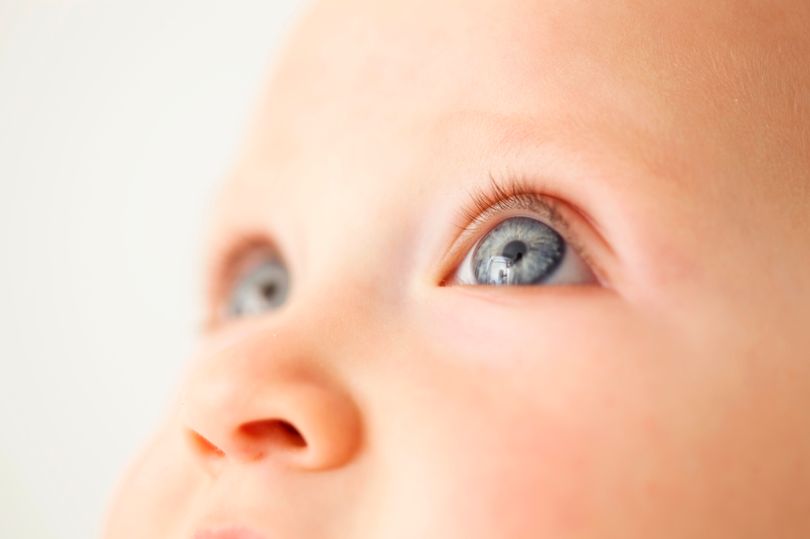My new granddaughter was seen by a doctor for her six-week check recently. As she lay on a table the doctor clicked his fingers and moved them slowly from her left to her right. She followed his fingers with her eyes quite precisely. He turned to me and said with some surprise, "She's tracking". "Oh, yes" I said, "she's been tracking for a week or so".
最近,医生看了我刚出生6个星期的外孙女。她躺在桌上,医生点着他的手指从左到右在她面前晃。她双眼紧盯医生的手。医生转向我,惊讶地说道,"她居然跟着我看了"。"哦,是的"我说道,"她已经这样一个星期左右了"。
"That's good", he said and I thought he was referring to my granddaughter's ability to focus her eyes on something crossing her field of vision.
"不错,"医生说道,我还以为他指的是外孙女能在视线范围内集中看某事的能力。
Well, he was, but he was also seeking assurance about something else. New research has shown that eye tracking, or lack of it, in babies as young as six months, is a clue to whether they will develop autism.
额,的确如此,但他也在确保其它事情。新研究已表明:6个月大的宝宝视线追踪,或缺乏视线追踪是他们日后是否会患上自闭症的一个迹象。
If we want to diagnose and treat autism early, we need to find new signs that may indicate a baby's risk of developing the condition.
如果我们想早点诊断、治疗自闭症,我们就必须找到或能表明婴儿发展该疾病风险的新迹象。
Typically, infants prefer to look at and scan faces from the first days of life. Not only do they prefer faces, but new studies suggest that they even prefer to look at a parent talking rather than non-human objects.
通常,婴儿喜欢在出生的前几天看人脸。他们不仅喜欢脸,新研究还表明他们甚至喜欢看着父母说话,而不喜欢看非人物品。
Eye movements, known as tracking, are a guide to learning, so developing newborns selectively stimulate the part of their brain relating to faces and social images from the moment of birth.
眼珠转动,也就是追踪,是学习的指南,所以新生儿刚生下来,就会选择性的刺激有关人脸和社交图像的大脑部分。
At a US autism centre, Dr Karen Pierce and her team are using eye tracking technology to discover if eye tracking patterns can be used as an early warning sign.
在美国一家自闭症中心,卡伦·皮尔斯医生和她的团队正是使用了视线追踪技术,以发现视线追踪模式是否可以被视作自闭症的早期预警信号。
They believe that an infant's choice of what to look at from the first days of life can signify if there are potential problems.
他们认为,婴儿生下来的头几天选择看什么或能表明他们是否有潜在的问题。

For instance, in one eye tracking study infants as young as 14 months, who eventually went on to be diagnosed with autism, preferred to look at films of geometric shapes rather than films of children dancing and doing yoga.
例如,在一项视线追踪研究中,婴儿只有14个月大小,他们最喜欢看几何形状的电影而不是儿童跳舞和练瑜伽的电影,他们最终都被诊断出了自闭症。
The reverse was true for 51 infants and toddlers who all, with one ?exception, preferred to look at people and faces.
相反,51位婴儿和刚会走路的小孩子,他们都喜欢看人、看脸(除了一个例外),最终都没有患自闭症。
In another recent eye tracking study, six month olds who later received an autism diagnosis looked less at the features of a face when the face was speaking.
在另一项最近的视线追踪研究中,6个月大的婴儿在之后接受了一项自闭症诊断,诊断过程中,当人脸说话时,婴儿看人脸特征的次数变少。
译文属可可原创,仅供学习交流使用,未经许可请勿转载












